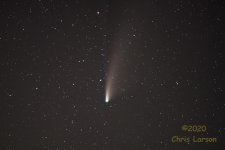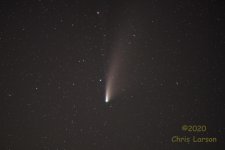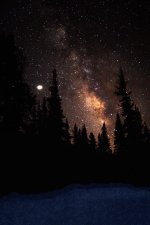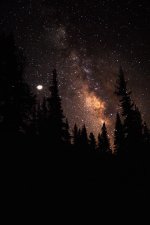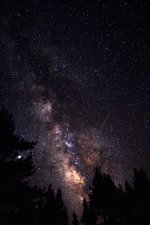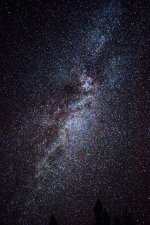TwistedThrottle
Senior Member
@blackstar
I prefer #1. To me, it seems the most natural of the 3, if natural is what you're going for. #2 has the shadows pulled showing lots of grain, but I do like the colorful blue sky. #3 has nice stars, but is lacking detail in the Milky Way. For a shot of the sky, you've given the foreground a lot of real estate, try to do something interesting with it or give the sky more of your image. A quick trick to figure composition is to max out your iso and take a 1 second shot. It'll look like crap but gives you a composition shot you can adjust from. Also, look into taking slightly faster exposures and then stack multiple shots with the same exposure time which leads to less noise and reduced star trails. Not much you can do about Jupiter, it always looks like a midnight sun with long exposures. You could play with radial filters to try to even things out, but personally I kinda like the midnight sun look. The frustrating part about astrophotography is waiting for mother nature to cooperate, but that's also what makes the shots you get feel more special!
I prefer #1. To me, it seems the most natural of the 3, if natural is what you're going for. #2 has the shadows pulled showing lots of grain, but I do like the colorful blue sky. #3 has nice stars, but is lacking detail in the Milky Way. For a shot of the sky, you've given the foreground a lot of real estate, try to do something interesting with it or give the sky more of your image. A quick trick to figure composition is to max out your iso and take a 1 second shot. It'll look like crap but gives you a composition shot you can adjust from. Also, look into taking slightly faster exposures and then stack multiple shots with the same exposure time which leads to less noise and reduced star trails. Not much you can do about Jupiter, it always looks like a midnight sun with long exposures. You could play with radial filters to try to even things out, but personally I kinda like the midnight sun look. The frustrating part about astrophotography is waiting for mother nature to cooperate, but that's also what makes the shots you get feel more special!
Last edited:

